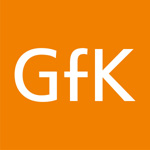 The mobile communications market is recovering all around the world. Over the first six months of the current year, sales of mobile phones, in particular, increased considerably in emerging and developing countries, while products relating to mobile internet were the growth drivers in western industrialized nations. Total sales of mobile phones and smartphones climbed by 6% in Europe. GfK Retail and Technology present key market figures as the IFA 2010 trade fair kicks off in Berlin.
The mobile communications market is recovering all around the world. Over the first six months of the current year, sales of mobile phones, in particular, increased considerably in emerging and developing countries, while products relating to mobile internet were the growth drivers in western industrialized nations. Total sales of mobile phones and smartphones climbed by 6% in Europe. GfK Retail and Technology present key market figures as the IFA 2010 trade fair kicks off in Berlin.
In emerging and developing countries, mobile phones (voice centric) play the greatest role. Sales are rapidly recovering following the downturn as a result of the economic and financial crisis. Growth of 28% has been experienced in the Latin American countries of Brazil, Argentina and Chile, 27% in sub-Saharan African countries and 19% in South-East Asia. Demand for mobile phones has risen by 12% in India, while China (including Taiwan and Hong Kong) has experienced a rise of 11%. These are important sales markets for manufacturers intending to increase their global market share. In contrast, sales of mobile phones in Europe and the Middle East/North African region stand at minus 2% and so remain below the previous year’s level, which was already comparatively low.
However, as a result of good infrastructure, the main focus in western industrialized nations is on products with open operating systems (smartphones) for mobile data transmission (data centric). Smartphones are now a standard feature of the business world. However, private users are also becoming more interested in the multitude of flexible applications (“apps”) and mobile access to social networking sites and are therefore increasingly choosing smartphones. In Europe, for example, sales of smartphones are booming with an increase of 52%. At 20%, smartphones have a higher share here than in any other region; however, the share of smartphones in the Middle East/North African region and South East Asia also already amounts to 19% and 14% respectively. There is major potential for growth in China (including Taiwan and Hong Kong), where sales of smartphones currently total 14%, sub-Saharan African countries (8%) and India (4%). Regional and international network operators will invest in expanding the infrastructure in these countries over the coming years and consequently drive sales forward.
The trend on the mobile communications market is moving towards open operating systems. Android can now be found on more and more smartphones, both in the USA and elsewhere. New software such as Bada, Brew and MeeGo will be joining established systems including the iPhone OS, Windows Mobile, Blackberry OS, Symbian and Palm WEBOS. In addition, several manufacturers have announced the release of new versions for the second half of the year. It is to be expected that open operating systems will also expand to other product categories such as webpads and e-readers.
Positive trend in Germany
Following a decline of 13% last year, the German market for mobile phones has been able to recover by 5% in the first half of 2010. This growth is attributable to sales of both contract and SIM-free mobile phones. SIM-free refers to sales where the customer independently combines a SIM card with a separate mobile phone. Customers frequently opt for discount tariffs and network operators respond by also offering discount lines. In contrast, sales of pay as you go packages are in decline.
The trend towards mobile internet is evident in several product categories in Germany. The sales increase for smartphones in Germany currently stands at 59%. In June, one in four mobile phones sold was a smartphone. USB sticks for mobile data communication are also recording rapid growth. Around 1.1 million sticks linked to providers were sold over the first six months of the year, with approximately half being pay as you go or contract models. The products on offer increasingly include unlimited downloads.
Internet-based data storage, known as “cloud computing”, will also play a more important role for smartphones in future, and the network infrastructure for new technologies that enable a higher transmission rate will also be further expanded.
{mosloadposition user9}




